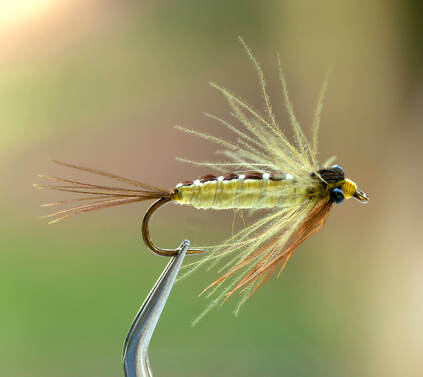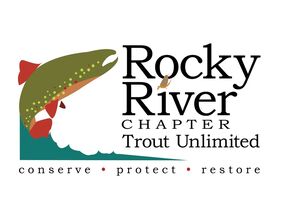 Damselfly Nymph
Damselfly Nymph
We continue with Part Two of Damsel Fly. Our general research indicates that the nymph stage of the damselfly is readily available year-round in stillwater pools in our Delayed Harvest waters. The hatch process for damselflies begins at 60 degrees, so imitating an adult is mostly doable during seasonally warm days. However, imitating the damsel nymph may be productive year-round.
Damsel Fly – Part Two – Nymphs
Damselflies are insects in the order Odonata which consists of Anisoptera, the dragonflies and Zygoptera, the damselflies. There are dozens of species of damselfly in North Carolina. Damsel nymphs regardless of species are dark olive, olive, olive-brown, brown or dark brown. Damsel nymphs are 3/4 - 1 1/2 inches in size (size 10 to 18 1xLong nymph hook) and relatively the same shape regardless of species. Tying an olive and a brown damsel nymph fly pattern in an average size will cover the gambit of possibilities in a given pool.
A distinctive element in tying a damsel nymph fly pattern is the addition of small eyes, typically using mono-eyes. Most nymphs have pin-point eyes which are not pronounced enough to give need to imitate
One very important key to determining when to use the damsel nymph is vegetation. If the pool does not have perimeter vegetation or woody debris, it is less likely there are damsel nymphs in the pool. The damselfly is predatory, eating other insects. The emergence occurs on vegetation, rocks or soil, so there is no need for an emerger fly pattern as it would be of no value to the angler.
To fly fish the damsel nymph, the nymph should slowly sink to the bottom near vegetation and remaining place without movement for a brief period. Then, apply very slight jerks that barely move the nymph on the bottom of the pool. If available practice in a pond first and apply great patience.
Damselfly Nymph
Hook : Tiemco 300 in size 8,10,12,14
Thread : Danville 70 in olive
Body : Olive Marabou
Tail : Olive Marabou
Legs : Lemon Wood Duck flank feathers
Directions :
Hook : Tiemco 300 in size 8,10,12,14
Thread : Danville 70 in olive
Body : Olive Marabou
Tail : Olive Marabou
Legs : Lemon Wood Duck flank feathers
Directions :
- Mount the hook in the vise
- Begin thread wraps three eyelengths from eye and let the bobbin hang
- Select a heavy section of monofilament, about a half inch or so. 30 to 50 pound test. Tie in using x wraps about three eyelengths from eye. Use a lighter to singe each side being careful not to catch everything on fire.
- Advance the thread to the hook bend and let the bobbin hang.
- Select an olive marabou feather and after aligning the tips, tie in at the hook bend. Advance the thread to the thorax. Do not trim the excess marabou, but instead begin wrapping the marabou in tight turns to the thorax and secure with thread. Trim the waste marabou and let the bobbin hang
- Tie in about twelve or fifteen Lemon Wood duck feathers, after aligning the tips, in front of the marabou and on top of the mono eyes with the curve of the wood duck turned up. Dub the eye with olive dubbing leaving the thread in front of the mono eyes. Select another wood duck feather and cut away the center to make a vee. Tie in the wood duck to make the legs and secure in front of the dub and mono eyes. Bring the remaining lemon wood duck over the dub to form the head and secure with thread and trim the waste.
